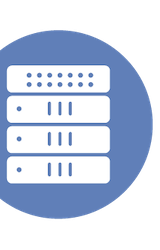This past Spring there was a seemingly insurmountable mountain of challenges facing companies as they worked to migrate from offices to remote work. Through the transition, it was apparent that virtual desktops could help ease the burden for overworked IT teams. The VMware Horizon on VMware Cloud on AWS is one of the unique tools helping to simplify the transition caused by the pandemic. VMware’s technology makes the transition to and from different workspaces easier and greatly simplifies system updates. With the underlying infrastructure managed by VMware, IT administrators can place their focus and time elsewhere. Check out VMware’s presentations from Cloud Field Day on our website!
VMware to Acquire Datrium
For Chris Evans, VMware’s approach to disaster recovery had seemed to take a pretty old school approach of emulating array-based replication, based on what he saw at Cloud Field Day earlier this year. This left a potential gap in their approach, that seems to have been filled by their recently announced acquisition of Datrium. This now gives VMware a modern DR solution that stands up to competing offerings, and adds a data mobility solution that extends out of the private data center and allows data migrations between public clouds.
VMware Cloud on AWS: A Cost-Effective Platform for Disaster Recovery
In this piece, Cloud Field Day delegate Ather Beg breaks down how to use VMware Cloud on AWS for disaster recovery, based on what he heard from the company at the event. This is actually one of Ather’s best use cases for the service when looking at the total cost of ownership. Using VMware Cloud on AWS allows the constant footprint of DR to be reduced to the bare minimum as hosts that can be added on-demand within minutes when required.
Pensando Brings Cloud Scale to Networking, Storage, and Security Services
What could you do with specific hardware for tasks in your data center? Not just general purpose CPUs and GPUs but an actual suite of hardware and software designed to accelerate your workloads? Gestalt IT took a look at the Pensando presentation from Cloud Field Day and highlight how their integrated hardware and software stack might just be the answer to your cloud problems. Their Distributed Service Platform is a solution to not only offload tasks from compute, but add cloud-scale networking and storage services to help organizations achieve their dream of software-defined architecture.
Cloud Networking Architectures
In this post from Ivan Pepelnjak, he breaks down one of the realities of running virtual machines on cloud infrastructure. These VMs still look for an Ethernet interface. For many enterprise-focused platforms, this means simply emulating a physical Ethernet cable. This allows admins to not have to relearn their networking stack. But the cloud providers implemented virtual networking that can scale beyond a few hundred hosts, using smart NICs. At Cloud Field Day, Pensando showed how they are trying to bring that kind of scale to the enterprise with their own smart NIC. Ivan looks at their solution and how it can fit into the enterprise world.
VMware Tanzu Portfolio
This report from Enrico Signoretti looks at VMware’s strategy with Tanzu. This brand represents VMware’s embrace of the Kubernetes ecosystem with a broad product portfolio encompassing core infrastructure as well as multi-cloud solutions. For Enrico, he sees VMware’s effort to build a foundation for mixed environments of virtualized and containerized applications in a multi-cloud scenario appealing to enterprises that are moving quickly to engage hybrid cloud infrastructures. Enrico got a deep dive on Tanzu at Cloud Field Day, so be sure to dig into the video after reading his report.
I Want Network Integration, I’m Not Getting It
At Cloud Field Day, Alastair Cooke was interested in hearing from AWS and VMware about how they are approaching network connectivity and integration between the two. He’s not a fan of point solutions that function or are managed differently; they add up to more problems. While the two showed a lot of interesting integrations, ultimately he’d like to see VMware on AWS networking fully integrated with the AWS VPC network as an equal to VPC. For now, there are a collection of workable solutions involving virtual interfaces, VPNs, and proprietary network bridging (HCX).
How VMware Marketplace Makes Simple to Deploy Vendors and Open Source Solutions
Raff Poltronieri joined us for his 7th full Field Day event with Cloud Field Day. At the event, he heard from VMware’s Product Marketing & Strategy Manager Nee Palaka, who led a deep dive on the VMware Marketplace. Raff really liked the potential of VMware Marketplace, which lets vendors reach VMware’s customer base, and also provides an opportunity for customers to use and install third party solutions plus open source products inside their VMware environments. He sees three main use cases for Marketplace, simplifying moving customers to the cloud, maximizing their investment in VMware’s platform, and ensuring developer flexibility.
VMware Cloud on AWS: Gaining Momentum and Maturity
Ather Beg is a fan of VMware Cloud on AWS, so he was glad that the company spent much of their recent Cloud Field Day presentation on the subject. As a delegate at the event, he got to hear about some of the exciting enhancements to VMware Cloud on AWS, including Elastic DRS Rapid Scale-Out and VMware Cloud Director Service for MSPs. The former let’s admins set Elastic RDS policy to configure a SDDC to scale-up quickly by adding up to 4 hosts at a time while reacting to a scale-out event, rather than timing out after two. The latter allows MSPs to use VMware Cloud on AWS as their multi-tenanted platform to serve customers. Overall a lot of interesting refinements to the service.
SolarWinds Joins the Cloud APM Game
Justin Warren sees the market for cloud monitoring tools as both crowded and operating on unstable ground. He got to see how SolarWinds plans to differentiate itself in this field at Cloud Field Day, with their Application Performance Monitoring suite. This consists of AppOptics, Loggly, and Pingdom, three products that SolarWinds brought in through acquisitions over the years. Justin sees this as a a cloud-based version of SolarWinds’ existing Orion platform. Justin would like to see the APM suite have deeper integration with Orion, but he wonders if these are being kept as separate to not bog down APM with legacy solutions that may not be relevant to organizations in the future. Be sure to check out his article and dig into the full presentation video for all the details.
What Is APM and Why Should I Care?
In this piece, Chris Grundemann gives an overview of why application performance management matters in modern IT. As a hard-core infrastructure engineer, he appreciates the importance of getting visibility across infrastructure. But the reason that is so important is to get better indicators into application performance, which is the reason that the infrastructure exists in the first place. At Cloud Field Day, SolarWinds showed how their APM suite can help provide visibility to the application layer, even as backing infrastructure becomes more challenging with moves to the cloud.
VMC on AWS: 5 Reasons You Should Give a Damn!
Jason Benedicic was one of the delegates at our Security Field Day event last week and got to hear from VMware, and came away with a new appreciation for VMware Cloud on AWS. Much of the appeal comes from his experience refactoring applications, moving big monolithic apps to the cloud can be quite challenging. These are often tightly coupled with other infrastructure components, meaning moving to the cloud can be a very gradual process as you disentangle everything. VMware Cloud on AWS allows organizations to move the existing application and all its dependencies as-is to a familiar operating environment, as close the cloud as possible. Jason breaks down a lot of the concerns admins have with this approach, and thinks this is a viable solution for many organizations with legacy applications.
MPLS + P4 = Pensando; But Does It Add Up?
Leading up to Cloud Field Day, Chris Grundemann was exceptionally excited about hearing from Pensando. Partly because he’s a bit of a neophile and they just came out of stealth. Also because what they are working he found really cool, adding P4 programming language support with hardware to provide software-defined, edge-accelerated, always-secure and visible, centrally managed platform that can run in any environment, all aimed the cloud! Combined with a prestigious founding team, Chris thinks they offer a truly innovative solution that while a niche use case for now, can be built out over time.
The Three Philosophies of SolarWinds APM
Application Performance Management often faces the thankless task of trying to monitor and manage increasingly complex applications. SolarWinds’ APM suite smartly views apps through three distinct philosophical lenses to provide IT will a full spectrum of visibility. In this post, Rich Stroffolino takes a look at the APM solutions SolarWinds presented at Cloud Field Day, including Loggly, Pingdom, and AppOptics. Each of these provides a key component to the overall suite, and while they do interoperate and feed into each other, they do so with a unique approach to the APM problem.
Fixing the X86 Problem
Much like the IBM Mainframes that preceded it, the x86 architecture is getting long in the tooth. While still ubiquitous across enterprise and consumer devices, the once standard architecture is seeing competition at all sides, as performance scaling and process enhancements have slowed. Chris Evans highlight Persando’s presentation from Cloud Field Day as an example of this. They use an ARM-based SmartNIC that can be programmed with P4 to offload network functions workloads from x86 and realize substantial performance gains. Chris sees the further disaggregation of compute, networking and storage as a result of these kind of innovative offload solutions.
VMware TKG
VMware Tanzu Kubernetes Grid represents a big shift for VMware and their long history of virtualization. Larry Smith was lucky to be delegate at Cloud Field Day to get to hear an extensive session on it at the event. With Kubernetes becoming increasingly important to IT infrastructure, understanding TKG as the core of core component VMware’s Kubernetes deployments is key. Larry breaks down the architecture of TKG, how organizations can deploy it across a number of personas, and how it integrates into vSphere. Be sure to check out the piece before digging into the presentaiton video
Pensando Expands What SmartNIC Offloads Can Do
For Justin Warren, he found Pensando’s presentation at Cloud Field Day to be impressive on a technical level. They’ve developed an ARM-based chip that is programmable using the P4 network programming language. This is used in a SmartNIC called a Distributed Services Card that you install in your server to offload various network functions from the general-purpose CPU. This has the potential to offer huge performance benefits on network functions, but Justin sees this as limited to larger cloud providers and the infrastructure that supports it. Justin has questions about the actual size of the market for this solution, and how much it will cost, but was definitely impressed by the technology and team behind Persando.
DR to VMware Cloud on AWS With Site Recovery Manager
In this piece, Justin Warren considers how VMware has really embraced cloud in a big way. After some attempts at building their own cloud, VMware can concentrate on what it does well, which is providing a familiar management environment for enterprises to manage complexity at scale. This approach shows in what Justin saw at Cloud Field Day with VMware Site Recovery, which uses vSphere replication on VMware on AWS to move VMs from one cluster to another.
Pensando Places Programmability First
Programming hardware isn’t easy. Unless you start out with the idea that you’re going to use a language that is easy to adapt to your needs. Tom Hollingsworth looks at the decisions made by Pensando to leverage P4 to extend its platform to adapt to the future needs of its customers. After hearing from the company at Cloud Field Day, Tom sees Pensando in the early stages of making something big, and the power of P4 will make the sky the limit. Their platform is currently shipping with NetApp and HPE systems and likely to see wider adoption, especially in cloud providers.
Aid Complex Troubleshooting With Distributed Tracing – Day Two Cloud Podcast Video
Distributed tracing is the dark art of tracking a transaction that passes through several microservices for troubleshooting purposes. Why was the transaction slow? Hard to say, especially when the failure is intermittent. Ned Bellavance and Ethan Banks explain the problem and how SolarWinds Application Performance Monitoring suite is tackling it with Pingdom, Loggly, and AppOptics. Especially AppOptics, something they heard a lot about during SolarWinds’ Cloud Field Day presentation.







